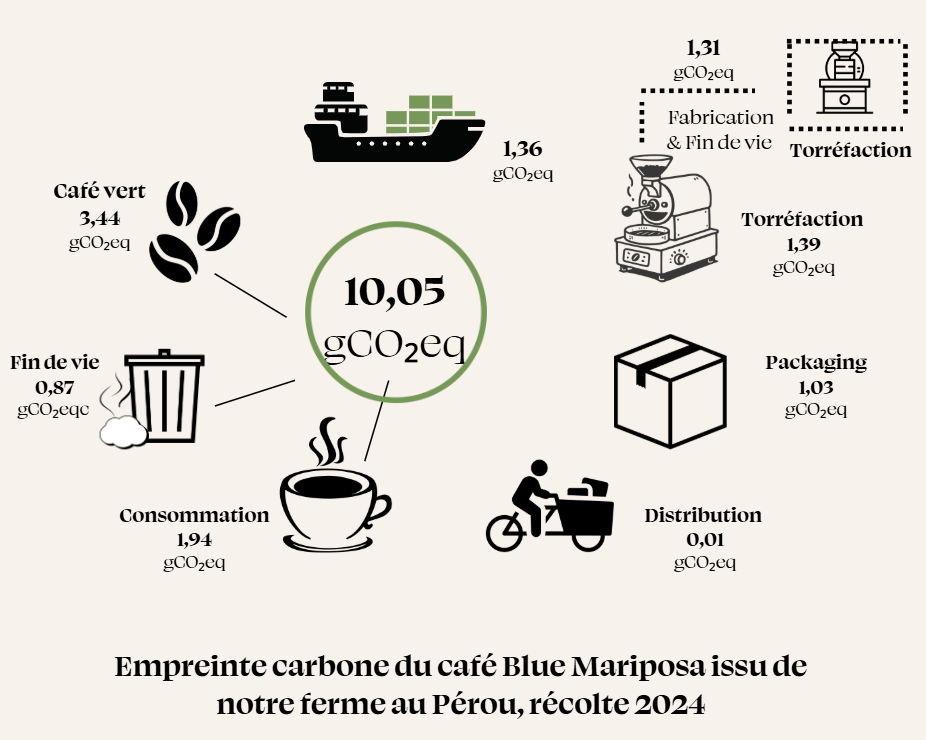The grinding, corresponds to the ground state of the coffee, this kind of powder that we obtain after having ground the coffee with a mill. It is the final step before the water passes through the coffee. The quality, freshness and size of the powder are crucial in the preparation of a coffee.
The importance of freshness of the grind
The grinding must be instantaneous, i.e. done just before the coffee is made. The aromas and compounds of coffee are very volatile and very sensitive to oxidation. The longer you keep the ground coffee, the more it loses its quality. This is why machines with an integrated grinder are so successful, because coffee lovers understand this. Freshly roasted and ground coffee guarantees a successful preparation with incomparable flavours.
The importance of grind size
Along with freshness, the size of the grind is the key element of a good coffee. It is the size of the grind that determines the resistance offered to the water that brews the coffee. Depending on the size of the grind, the water passes more or less easily and therefore more or less quickly through the coffee. This gives it time to take on water-soluble compounds. If the grind is too coarse, your coffee will be tasteless because the water has passed through it like rain on gravel. If the grind is too fine, your coffee will be very strong because it will be very heavy, like rain that has trouble passing through compacted clay.
The importance of the quality of the grind
Another aspect of grinding, often less known, is the quality of the grinding. When you cut parsley or meat with a knife that does not cut because it is not adapted or not sharp, you tear the tissues of the meat and crush your parsley. If, on the other hand, you use the right, sharp knife, you will slice easily and cleanly. Both the parsley and the meat will keep their juice. For coffee beans, it's the same thing. There are grinders and grinders.
The importance of the homogeneity of the grind
A good grind is either homogeneous or made of chips of the same size, otherwise the water, which passes through, goes where it meets the least resistance, or in the pockets of the coarsest chips. It thus creates preferential flow channels, a kind of shortcut, in order to avoid the densest and most compact areas. It then passes through the grind very quickly and only in certain places. So how do you get a homogeneous grind? By choosing the right coffee grinder!
You will have understood that coffee is always caught between two perils, under-extraction in the case of a too thick or coarse grind. The water passes through it too quickly, and does not take on its elements. The coffee is then insipid, bland, with notes of cooked cereals, and acid, its crema whitish. In short, it is out of shape. And the over-extraction in the case of a too fine grinding. The water flows only very slowly or not at all, because the grind is almost impermeable, because it is too fine. The coffee will then be very dark, bitter and acidic at the same time, as if salty.
So what can you do to find the perfect grind and make a good coffee?
It's simple, each preparation has its own grind. Here is a small guide:
- The extra fine grind has a very powdery aspect, similar to that of flour or crystal sugar. This type of grind is dedicated to oriental coffee makers, Turkish coffee (ibrik). It is the finest.
- The fine grind resembles fine salt. When you hold it between your index finger and thumb, it starts to aggregate but is still a little grainy. This is the grind for espresso. It must be resistant to the water that is applied with high pressure.
- The medium fine grind, comparable to powdered sugar, is ideal for filter coffee makers and V60s, or Italian coffee makers (the Moka) for those who like strong coffee. It is also suitable for Aeropress.
But you can choose a bigger or smaller grind depending on the filter you use (white paper, brown paper, metal) (see our article on which filter to choose)
- The medium/coarse grind, comparable to crystal sugar, is made for Chemex and piston coffee machines.
- The coarse or thick grind, similar to coarse salt, is suitable for plunger coffee makers such as the Espropress, or even cold brew coffee made with a Hario bottle for example.
It's up to you!
Now that you know how to make your own coffee, all you have to do is practice by discovering our latest coffees!
🌱 O ur selection of coffee beans.
Don't have a coffee grinder?
Don't panic, we also offer ground coffee adapted to your machine.
🌱 O ur selection of espresso coffees.
🌱 O ur selection of coffees for filter coffee maker.
🌱 O ur selection of coffees for Italian coffee maker.
🌱 O ur selection of coffees for piston coffee maker.




















